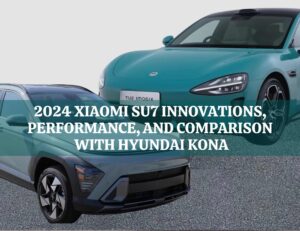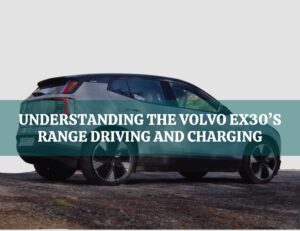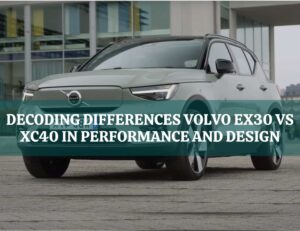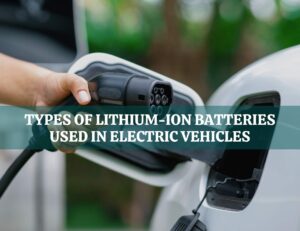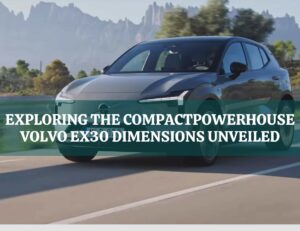In this article, we compare the Hyundai Kona, a compact crossover SUV, with the Volvo EX30, a compact excavator, focusing on their design, performance, technology, and suitability for different purposes.
How do the Designs of Hyundai Kona and Volvo EX30 Differ?
The Hyundai Kona boasts a modern and sporty design typical of compact SUVs, featuring sleek lines, a bold grille, and stylish accents that appeal to urban drivers. Its compact size makes it ideal for city driving, parking in tight spaces, and maneuvering through traffic with ease. On the other hand, the Volvo EX30 exhibits a robust and utilitarian design suited for heavy-duty construction and excavation tasks. Its sturdy build, protective features, and specialized equipment reflect its purpose as a versatile workhorse on job sites.
Performance Comparison: Hyundai Kona vs Volvo EX30
When it comes to performance, the Hyundai Kona and Volvo EX30 cater to different needs and environments. The Kona offers agile handling, responsive acceleration, and fuel-efficient engine options, making it a practical choice for daily commuting, weekend adventures, and urban exploration. Its compact size contributes to nimble driving dynamics without compromising on interior comfort and cargo space.
In contrast, the Volvo EX30 prioritizes power, precision, and durability for construction and earthmoving applications. Equipped with a robust engine, advanced hydraulic systems, and specialized attachments, the EX30 delivers impressive digging forces, lifting capacities, and operational efficiency on job sites. Its performance capabilities are tailored to heavy-duty tasks, ensuring reliability and productivity in challenging conditions.
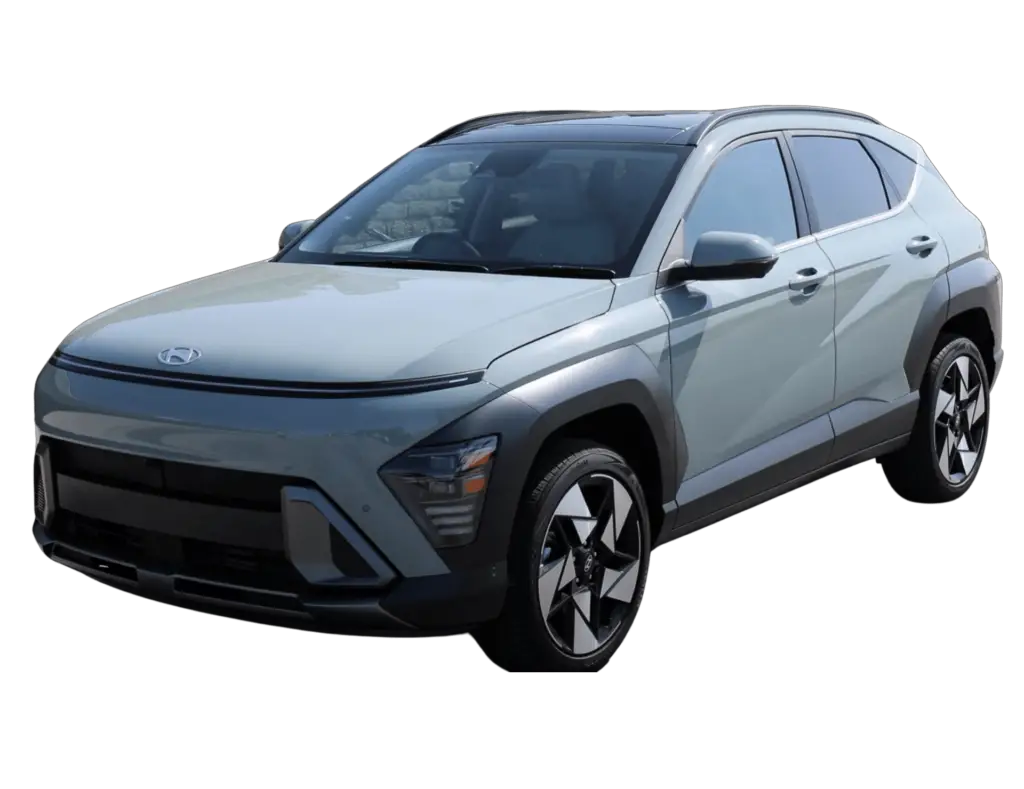
Technology Features: Hyundai Kona’s Modernity vs Volvo EX30’s Utility
Both the Hyundai Kona and Volvo EX30 incorporate advanced technology features, albeit for different purposes. The Kona emphasizes connectivity, entertainment, and driver-assist technologies to enhance the overall driving experience. From touchscreen infotainment systems and smartphone integration to safety features like lane-keeping assist and automatic emergency braking, the Kona offers a range of modern amenities for convenience and safety.
In contrast, the Volvo EX30 focuses on utility and productivity with technology features designed for excavating and construction tasks. It includes advanced hydraulic controls, operator-centric interfaces, optional attachments for specialized functions, and safety systems tailored to heavy equipment operations. The EX30’s technology suite enhances operational efficiency, accuracy, and job site safety.
Comfort and Interior Space: Hyundai Kona vs Volvo EX30
In terms of comfort and interior space, the Hyundai Kona provides a comfortable and well-appointed cabin for passengers, with adjustable seating, ample storage options, and modern amenities like climate control and infotainment systems. Its compact dimensions contribute to easy maneuverability and parking in urban settings.
On the other hand, the Volvo EX30 prioritizes operator comfort and ergonomics within the excavator’s cabin. While not designed for passenger transport, the EX30’s cabin features a comfortable seat, intuitive controls, visibility enhancements, and noise-reducing technologies to support long hours of operation on job sites.
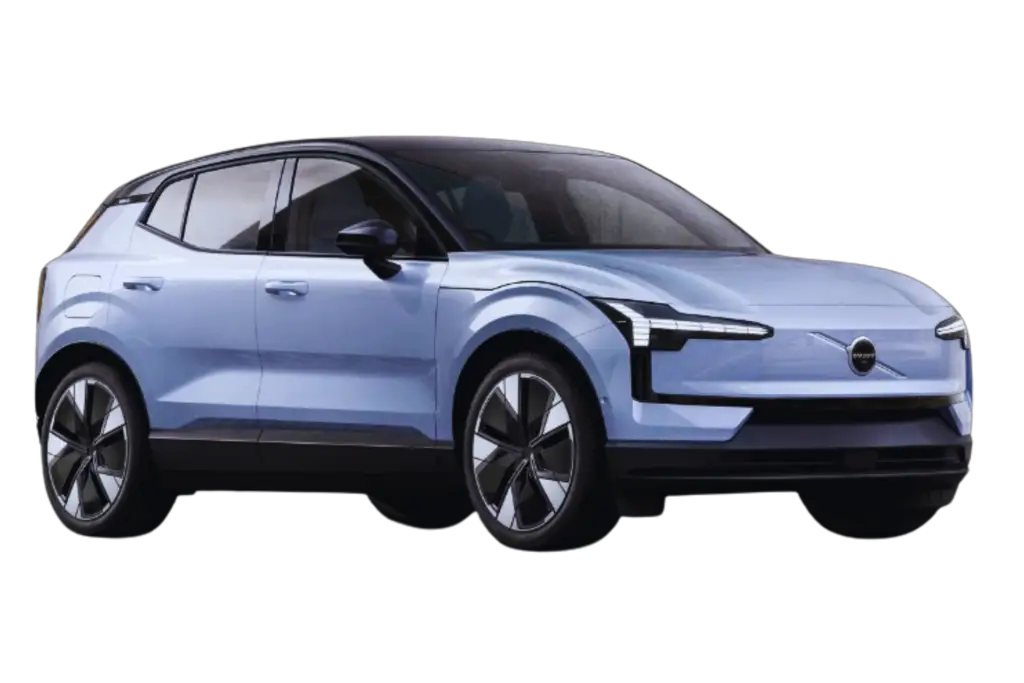
Environmental Impact: Hyundai Kona’s Efficiency vs Volvo EX30’s Performance
The Hyundai Kona offers eco-friendly options with its electric and hybrid models, promoting fuel efficiency and reduced emissions for environmentally conscious drivers. These models contribute to lower carbon footprints and align with sustainability goals in the automotive industry.
In comparison, the Volvo EX30 focuses on performance and productivity in construction and excavation tasks, prioritizing power and efficiency for heavy-duty operations. While not directly comparable in terms of environmental impact due to different purposes, Volvo emphasizes sustainability initiatives in its overall product lineup and operations.
Conclusion
In conclusion, the Hyundai Kona and Volvo EX30 represent distinct vehicles tailored to different needs and industries. The Kona excels as a versatile compact SUV with modern design, technology features, and urban-friendly capabilities, catering to daily driving and recreational activities. On the other hand, the Volvo EX30 shines as a robust and efficient compact excavator designed for heavy-duty construction and earthmoving tasks, prioritizing power, performance, and operator comfort on job sites.
FAQs
Can the Hyundai Kona tow heavy loads like the Volvo EX30?
The Hyundai Kona’s towing capacity is limited compared to heavy-duty equipment like the Volvo EX30, which is specifically designed for lifting and excavating heavy loads.
Does the Volvo EX30 offer passenger seating and amenities like the Hyundai Kona?
No, the Volvo EX30 is an excavator designed for operator use on job sites and does not provide passenger seating or amenities like a compact SUV such as the Hyundai Kona.
Which vehicle is more fuel-efficient, the Hyundai Kona or the Volvo EX30?
The Hyundai Kona, especially in its electric and hybrid variants, is more fuel-efficient compared to the Volvo EX30, which is designed for heavy-duty performance rather than fuel economy.
Can the Volvo EX30’s technology features be compared to the Hyundai Kona’s infotainment systems?
The technology features in the Volvo EX30 are tailored to excavating and construction tasks, focusing on operational efficiency and safety, whereas the Hyundai Kona’s infotainment systems cater to passenger comfort and entertainment.
Is the Hyundai Kona suitable for off-road driving like the Volvo EX30?
While the Hyundai Kona offers optional all-wheel drive and some off-road capability, it is primarily designed for on-road driving and urban environments. The Volvo EX30 is specialized for off-road and rugged terrain conditions on job sites.
Do both vehicles have advanced safety features?
Yes, both the Hyundai Kona and Volvo EX30 offer advanced safety features, although the specific features may vary based on the vehicle’s intended use and target market.



